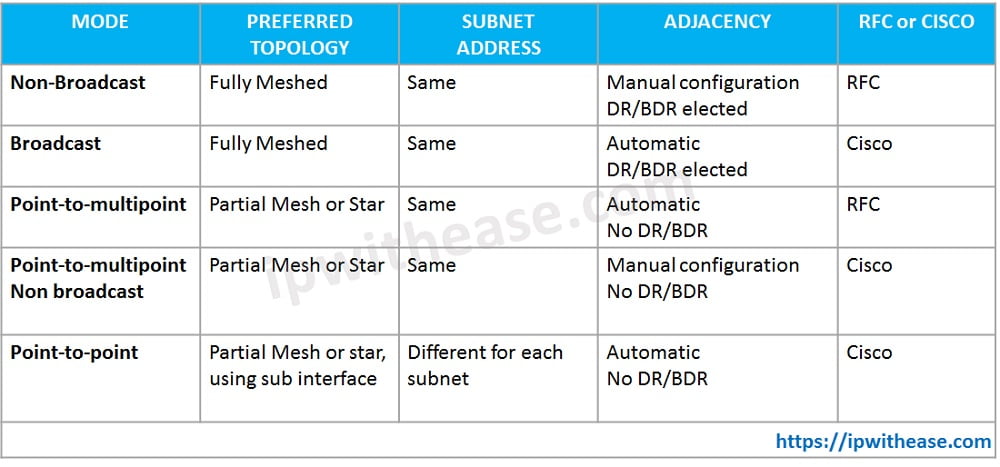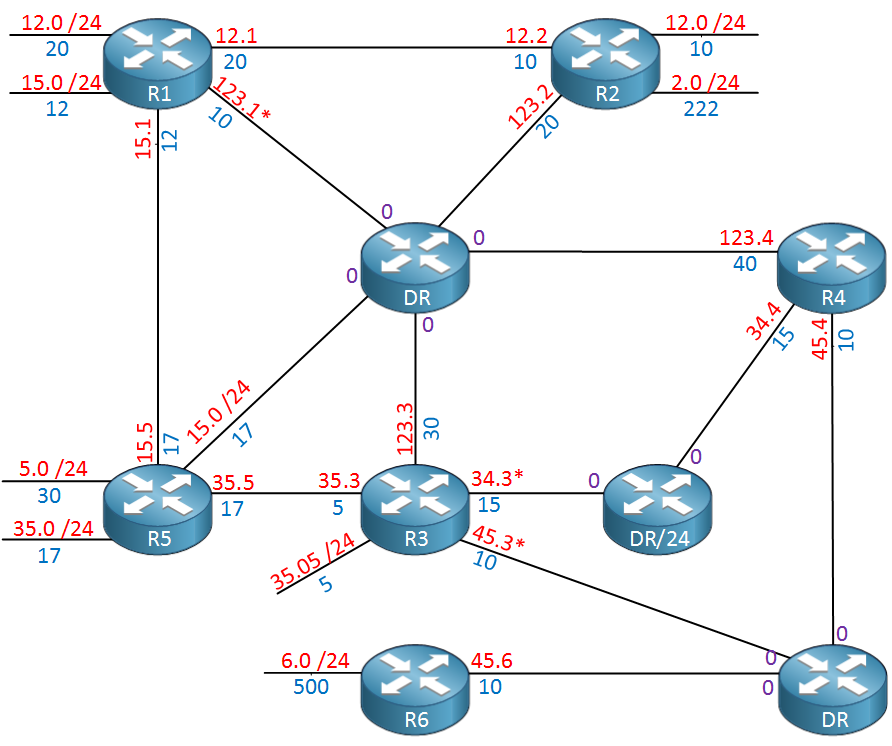

Configuring a loopback interface on a router provides an interface with an IP address that is always up and can consistently be used to identify and reach the router. We begin with some notes on loopback interfaces.

Thank you for visiting.This is the third and final installment of my study notes on the topic of OSPF for the CCNA.
Point-to-Multipoint non-broadcast –In this mode the NBMA cloud don’t support multicast, thus, the neighbors should be manually defined. This is the recommended network type to use in non-full mesh NBMA networks. Multicast hellos are sent to discover neighbors, so the layer 2 must support multicast/broadcast capability. Point-to-Multipoint mode – In this mode, no DR/BDR election occurs. The network type is not required to be set because, by default, all subinterfaces have a point-to-point network type. Point-to-Point mode – In this mode, each virtual circuit (VC) must be defined as a separate point-to-point subinterface for instance, separate subnets for each point-to-point subinterfaces are required. It can be configured by configuring the network-type as broadcast or statically configuring the neighbors. Broadcast mode – In this mode, the broadcast network is simulated. This network type can be run in 3 modes under OSPF: The OSPF neighbors must be manually defined thus all traffic is unicast. The default OSPF network type of nonbroadcast is on by default over these media. DR and BDR take place in this network type. This network type requires additional configuration to operate. Include Frame Relay, ATM, X.25 and others. The default OSPF network type of point-to-point is on by default over these media. The OSPF packets are multicast based because in some cases unnumbered links are used and the destination address is not known. In this network type, DR and BDR election does not take place. Include PPP and HDLC encapsulated links such T1, ATM point-to-point subinterfaces, and similar P2P interfaces. No specific configuration is required because is on by default in these media. This network type requires that the link supports Layer 2 broadcast and the election of DR and BDR takes place by default. Include Ethernet, Fast Ethernet, Gigabit Ethernet, FDDI and Token Ring. 
Usually, the media defines the default network type. The OSPF protocol runs over several media types and its functionality is different from each one.







 0 kommentar(er)
0 kommentar(er)
